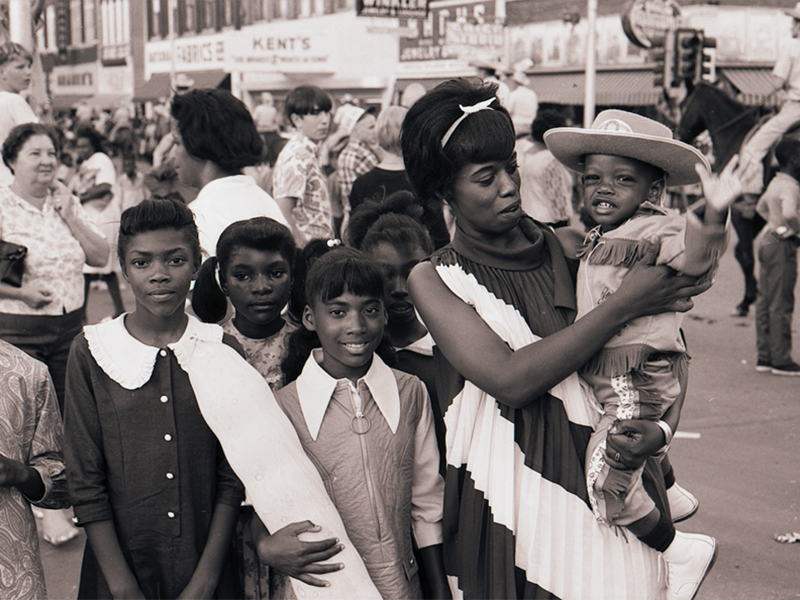
The University of Arkansas Libraries Special Collections Division has recently processed a collection of photos taken by Geleve Grice. The 41.5 linear feet of photos depict weddings, graduations, funerals and daily life in the Black community in and around Pine Bluff.
Public figures featured in the photographs include Muhammad Ali, Rev. Jesse Jackson, Dionne Warwick, Maya Angelou, Wiley Branton, Edith Irby Jones, Ida Rowland Bellegard, Raymond Miller, Lawrence A. Davis, Martin Luther King Jr. and Silas Hunt. The Geleve Grice Photograph Collection was donated to the U of A by James B. Blair of Springdale.
Collection materials include photographic prints, slides and negatives created by Grice during his life and career as a photographer, as well as correspondence, financial records, yearbooks from the University of Arkansas at Pine Bluff and materials related to exhibitions of Grice's work.
Born in Tamo in 1922, Grice was one of the most prolific Black photographers in Arkansas' history. After spending his teenage years in Little Rock and graduating from Dunbar High School, Grice served in the United States Navy during World War II. After the war, Grice attended and graduated from Arkansas Agricultural, Mechanical, and Normal College in Pine Bluff, now known as the University of Arkansas at Pine Bluff. While studying at Arkansas AM&N, Grice first established a relationship with the school as a campus photographer.
Already operating a photography studio in Pine Bluff when he graduated in 1950, Grice spent the rest of his life documenting daily life in southeastern Arkansas, particularly within its Black community. Grice's photographic work was the subject of a 1998 exhibition in Pine Bluff and a 2003 exhibition in Little Rock. His photos have provided source material for A Photographer of Note: Arkansas Artist Geleve Grice, a 2003 book written by U of A professor Robert Cochran, as well as Cochran's 2023 Pryor Center presentation with U of A assistant professor Aaron Turner, "Searching the Archive: The Photographic Legacy of Geleve Grice."
Grice passed away in 2004, and his collection was donated to the libraries in 2005.
This collection was processed by Adam Heien, and processing was completed in March 2024. Additional assistance was provided by Aileen Polanski, Kath Rees, Juliette Robinson, Tyler Schroeder and Katrina Windon.
"The Geleve Grice Photograph Collection provides an excellent illustration of Black life and experiences in Arkansas in the latter half of the 20th century, particularly in the Pine Bluff area and the rest of southeastern Arkansas," Heien said. "I am proud to have had a chance to work with this collection and encourage researchers to use it themselves."
Contacts
Kelsey Lovewell Lippard, director of public relations
University Libraries
479-575-7311, klovewel@uark.edu